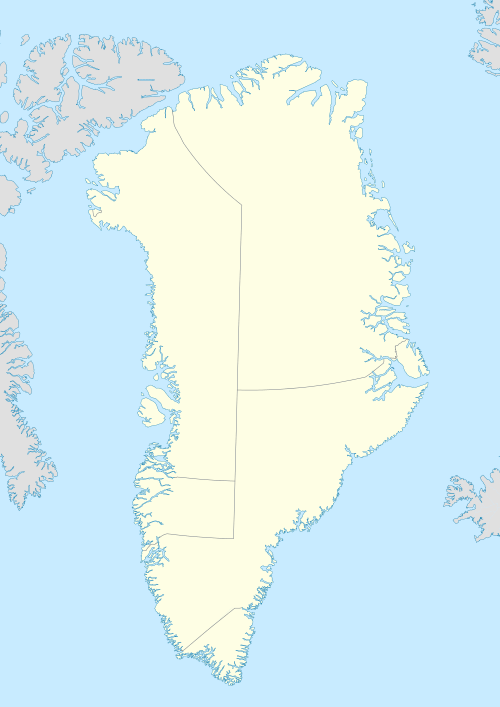Littleton Island (Arctic)
| Native name: <span class="nickname" ">Pikiuleq | |
|---|---|
 Littleton Island | |
| Geography | |
| Location | Smith Sound |
| Coordinates | 78°22′01″N 72°51′11″W / 78.367°N 72.853°WCoordinates: 78°22′01″N 72°51′11″W / 78.367°N 72.853°W |
| Administration | |
| Municipality | Qaasuitsup |
Littleton Island, also known as Littleton Islands, (Greenlandic: Pikiuleq) is a small coastal island cluster in the Qaasuitsup municipality, off NW Greenland.[1]
Geography
Littleton is a rocky island surrounded by tiny islets and rocks. The main island lies approximately 1 km (0.6 mi) from NW Greenland’s coast in the Hatherton Bay, Smith Sound area.
Littleton and nearby islets are one of the largest breeding grounds in Greenland for the common eider and have been designated an Important Bird Area.[2]
History
In July 1853, during the Second Grinnell Expedition on the brig Advance Kane built a cairn on Littleton Island. Kane named one of the adjacent islets Hans Island after Hans Hendrik, the native Greenlandic helper he had with him on the trip. The islet lies about 300 km (190 mi) south of the island today called Hans Island —that this is part of the Littleton Island cluster is testified by Kane mentioning Edward Augustus Inglefield, who named Littleton Island.
Later in the expedition Christian Ohlsen died on the Littleton Island on 12 June 1855.[3]
See also
References
- ↑ Hakluyt Island, Greenland
- ↑ Littleton island and nearby islets
- ↑ Kane, Elisha Kent (1857). The United States Grinnell Expedition in Search of Sir John Franklin. Boston: Phillips, Sampson & Co.